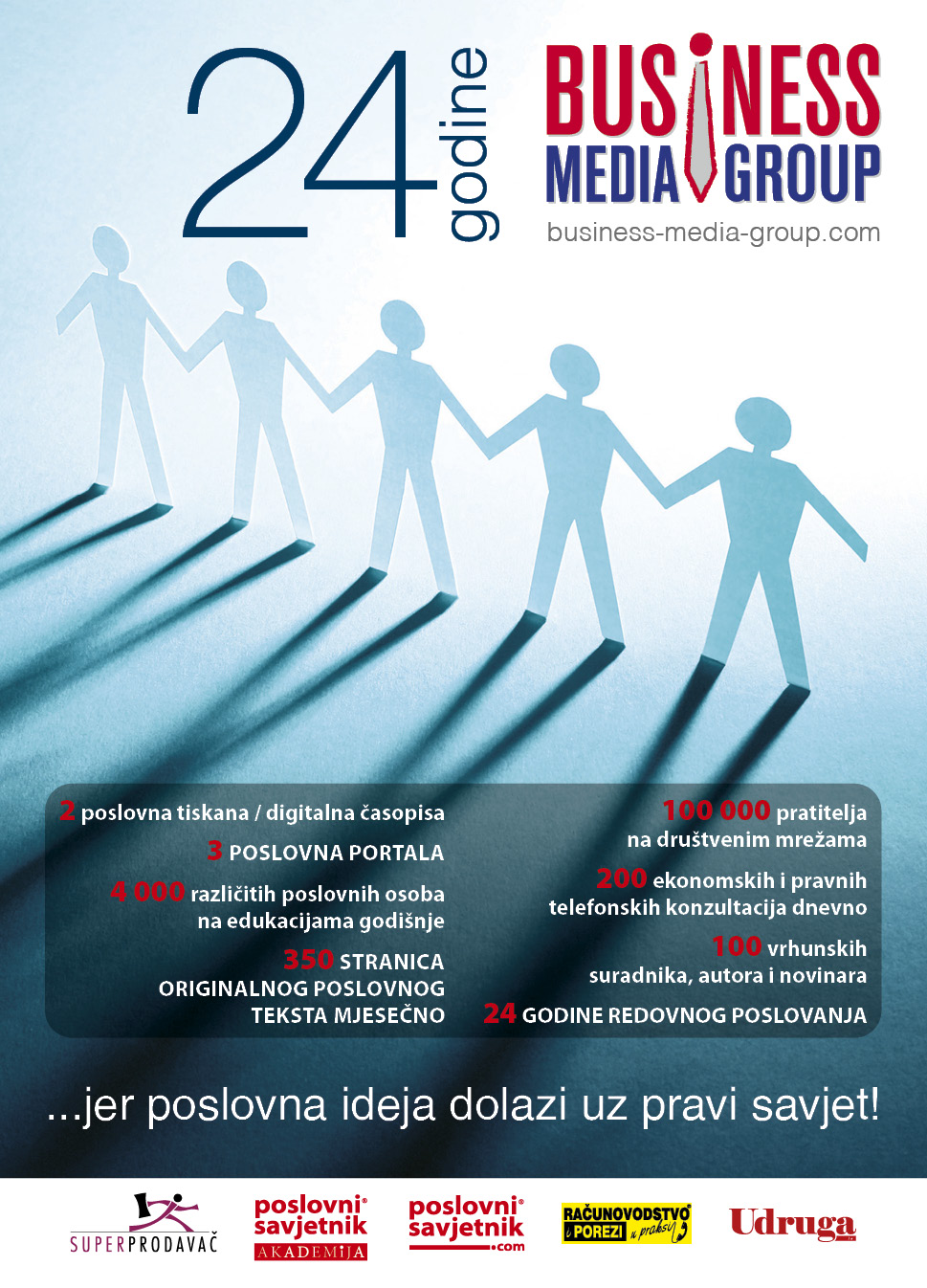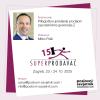
This column is answering:
- How do Leaders around the globe deal with a crisis?
- What can Leaders learn from the principles of Jazz?
- What is the importance of improving internal communication in times of crisis?
Change is the only constant! (Heraclitus 540 BC)
As introduction I show two important trends in the financial markets where every company, every Leader should be aware of.:
- Figure 1 shows that the average lifespan of companies is declining.
In 1964, the average tenure of a company on the S&P 500 was 33 years, but this is projected to fall to an average of just 12 years by the year 2027 according to consulting firm Innosight.
At this churn rate, it is expected that 50% of the S&P 500 could turnover between 2018-2027.
- Figure 2 shows the share of Environment, Social and Governance (ESG) criteria in total assets.
ESG is the New Status Quo. Historically, performance was all that mattered to most investors, but going forward, considering ESG criteria (environment, social, and governance) is expected to become a default component of investment strategy as well.
1. There have been many crises throughout the years, they brought a lot of
breakthroughs and a lot of mistakes.
There is one big mistake, which is the most dangerous, the most fundamental, and the most common. This biggest mistake that has killed the vast majority of organizations in the recent decades is treating each crisis as something rare and special, as something unique and isolated.
For instance:
- An economic crisis? We come together for a big tense meeting, we brainstorm, develop an action plan, tightened our belts, and brace until the worst is over.
- A new challenging demand from a client (a supplier, a governmental agency, a partner)?
We come together for a big tense meeting, we brainstorm, develop an action plan, tightened our belts, and brace until the worse is over.
- COVID-19? We come together for a big tense meeting, we brainstorm, develop an action plan, tightened our belts, and brace until the worse is over.
SO:
Every time we start from scratch.
Every time we lose time, money, trust, productivity, and impact.
Every time we fail our best people who, no matter how successful and professional, begin to drown in this endless wave of fire-fighting.
This approach to crises was effective during the last century when disruptions came rarely and there was no need to prepare for them in advance or to have an internal capacity for re-invention.
But that time has passed! Since 1988, there have been 469 country-level economic recessions, one about every 25 days. In this century, in our volatile uncertain world with disruptive markets, a crisis is not something unique, rare, or unpredictable anymore.
Crises are the norm, and this norm can become our enemy - OR - our greatest opportunity.
Now, how can we make that transition in our Leadership approach?
Don't start from scratch every single time - instead, develop a strong skill, a clear course of action, a super-simple, but effective approach to any crisis.
- Know yourself and your people, create teams, delegate, improvise
- Know your organization, the strengths, opportunities, aspirations, wishes and results
- Know your financial situation
- Learn from other companies through benchmarking.
It is possible: The last six months we have seen many start-ups and companies that successfully improvised and created new products and new services like cardboard desks and other products for working at home, we saw a boost in digital education programs and free webinars, Zoom and Teams added new functionalities etc.
Leaders today need to be expert improvisers. (Prof. Dr. Frank Barrett)
2. Leadership lessons from the geniuses of Jazz
Frank J. Barrett is a professor of management and also a jazz pianist who has led his own trios and quartets. I had the honor to work with him at Tilburg University (Netherlands) some 15 years ago when I was working there.
In his book ˝Yes to the Mess˝ the Surprising Leadership Lessons from Jazz, Barrett riffs on the themes that improvisational jazz and enlightened corporate management have in common.
What do the world's best leaders and best teams do? They improvise.
Successful leaders do what jazz musicians do. They invent novel responses and take calculated risks without a scripted plan or a safety net that guarantees specific outcomes. They negotiate with each other as they proceed, and they don't dwell on mistakes or stifle each other's ideas.
In short: they say "yes to the mess" in today's hurried, hasty, yet enormously innovative and fertile world of work.
An improvisational "jazz mind-set" and the skills that go along with it are essential for effective leadership today. In his book ˝Yes to the Mess˝ Frank Barrett vividly shows how the principles of jazz thinking and jazz performance can help anyone who leads teams to develop these critical skills, wherever they sit in the organization.” ˝Yes to the Mess˝ outlines how great leaders, like great jazz improvisers, adopt the following practices:
1. Improvise through the chaos.
Barrett tells about playing at a club in Cleveland with a jazz quartet whose members he didn’t know, including a singer he had never accompanied. In the middle of a bebop tune, it became clear the singer hardly knew the song. As the saxophone stopped playing and the other players balked, Barrett persisted, hitting a few notes and then the original melody. Soon the sax jumped back in and the singer started making up words. “Within a few seconds, we were grooving again,” he writes.
That tale leads him to the story of General Electric’s (GE) experience during the financial crisis, when the company’s hugely profitable financial arm, GE Capital, suddenly hit a wall. GE wound up improvising with its other businesses, from manufacturing light bulbs to jet engines. The company recovered on the strength of its ability to improvise and adjust to change.
2. Embrace errors as a source of learning.
Barrett quotes a favorite saying of jazz trumpet legend Miles Davis: “If you’re not making a mistake, it’s a mistake.” Endemic to jazz, errors push musicians to reach beyond their comfort zones.“
A story about errors from the corporate world: When Alan Mullaly became chief of Ford Motor Company in 2006, the company had lost billions. Mullaly asked his vice presidents and department heads to come to progress meetings with color-coded folders, including green for good, yellow for caution and red for problem areas. At first, the managers only brought green folders until Mullaly insisted that there must be an explanation for the billions in losses. Finally a vice president, Mark Fields, spoke out about the production and distribution problems of the Ford Eagle. Mullaly applauded Fields’ decision to come forward. At the next meeting, many of the folders were yellow and red and Ford was able to start working on fixing its problems.
3. Perform and experiment at the same time.
Barrett includes a quote from trumpeter Wynton Marsalis about what it’s like when he asks his father, master pianist Ellis Marsalis, to play on a recording. “I can tell him, ‘I don’t like what you played on that,’ and he’ll just stop and say, ‘Well, damn, what do you want?’ Then I’ll say, ‘Why don’t you do this’ and he’ll try it. That’s my father, man.” Barrett calls that exchange “a microcosm of a provocative learning relationship that nurtures an aesthetic of openness and surprise.”
For a business example, Barrett highlights a quote from one of the inventors of the inkjet printer at Hewlett-Packard, John Vaught. He and another inventor, Dave Donald, “considered and built numerous combinations of inks, resistors, slides, electrodes, explosives, lasers, and piezo-electrics” before they developed the final project. It was a case of improvising and performing simultaneously that produced a breakthrough product.
4. Rely on minimal structure and maximum autonomy.
Jazz bassist and composer Charles Mingus once famously said, “You can’t improvise on nothing. You got to improvise on something.” In other words, musicians need structure, a song or a set of notes, on which they can embellish. But Barrett says the best jazz is made up of “order less order,” where players are in constant dialogue, while doing their own thing, and relating their creations to what other band members are doing.
In business, Barrett likes the way Toyota runs things. The company has four simple rules that provide minimal structure, including, “the pathway for every product and service must be simple and direct.” Barrett says that aside from those rules, workers have autonomy to improve their techniques and suggest improvements. He tells about a bottleneck problem arising at a Prius factory that caused the production line to halt. As the supervisors supported them, the line workers solved the problem in seconds.
5. Jam and hang out.
Barrett tells the story of a 1936 Charlie Parker jam session when drummer Philly Jo Jones got upset with Parker and threw a cymbal at Parker’s head. Parker said that the incident prompted him to practice 15 hours a day for the next several years, learning standard tunes in all 12 keys. Then in a subsequent jam session, Parker discovered a way to build solos on chord changes and intervals he had been hearing in his head. That experience led him to write his classic song, “Ko-Ko,” a hugely influential jazz number.
Barrett’s business examples: Thomas Edison’s famous research lab in Menlo Park, N.J., where he collaborated with 10-15 engineers at a time, who jammed and came up with the electric light bulb and other inventions. He also describes Steve Jobs’s design of the Pixar office building, where a central atrium facilitated random encounters and collaboration.
6. Lead using “provocative competence.”
On March 2, 1959, Miles Davis led a recording session that would produce the most popular jazz album of all time, “Kind of Blue.” Davis had been immersing himself in innovative classical music by composers like Bartok, Stravinsky and Schoenberg, which led him to put together some unconventional arrangements, which he presented to his fellow musicians when they arrived for the session. One of the songs, “Blue in Green,” had ten bars instead of the usual eight- or twelve-bar form. Without rehearsal, the quintet just went ahead and played. Not only was the result amazing and original, but it led three of the quintet’s members to go on and create their own bands, including Bill Evans, who transformed the piano trio.
For an equivalent corporate example, Barrett describes Toyota’s decision to make the Lexus LS 400, the first Japanese luxury sedan. For Toyota, the company’s regular music was its credo of making cheap cars for everyone. Eiji Toyoda, president and chairman of Toyota at the time, pressed his employees to produce a car that measured each part against the best in the world, including the best transmission and the best audio system, and to have a high fuel-efficiency rating to boot. “Just as Miles Davis had asked his musicians to play a song no one had ever played, in a key no one had ever heard, using a mode that was yet to be invented” writes Barrett, “Eiiji Toyoda had issued a seemingly impossible challenge.” The LS 400 evolved from some 450 different prototypes, which included thousands of innovations.
The most important lesson however: managers, like jazz musicians, need to interpret vague cues, face unstructured tasks, process incomplete knowledge and need to take action anyway.
As Barrett concludes:
“Musicians prepare themselves to be spontaneous, managers and executives can do the same.” Actually you might say not only can, but they must.
In his video at https://youtu.be/BiIWwkhNYWo Frank Barrett discusses lessons learned as we face complexity and constant change. In the first 32 minutes he explains these guidelines for Leaders.
I warmly recommend you to invest these 32 minutes of your precious time, it is inspiring.
3. Taking a step down to daily practices, we see that many companies around the globe started
hybrid teams that work from home, some work partly from home, partly in the office.
Overall the results are very positive. Positive regarding productivity, quality and reduction costs on one hand, very satisfied employees and customers on the other.
What needs to be improved is the communication between leaders and employees.
Not only because leading at distance is different, also employees, like many people are afraid for covid, insecure and some miss contact with their colleagues and managers.
And we know that communication, interaction is the basic need for humans to live / work together.
The most important part in communication in organizations is that leaders are Asking open questions and Listen, actively and empathetically. I like to "talk you" through a beautiful visual by Kelvy Bird which you can find below this text about ˝Listening on four levels˝.
1. Imagine that you would share with someone everything you know and usually speak about, as always.
You would be downloading your habits of thoughts and judgment and be in a mode of confirming and reconfirming your opinions and judgements.
If you speak on this level only, you would remain in the realm of the known and not share or learn anything new.
2. It is also possible that you enter the conversation with a factual, open-minded interest and soon a debate would spin-off. The main dynamic here would be confronting and disconfirming, and speaking from differentiating. That’s what you see a lot in talk shows and in parliaments.
Often the participants harden their perspective, enter a competitive mode about who has the better arguments and get into verbal fights. That’s why I neither support debate clubs nor debate trainings for young change leaders. We can do a lot better than that!
3. The moment we are ready to listen empathically with an open heart and open mind,
the story changes and the quality of our exchange improves tremendously.
You will experience a dialogue and enter the dynamic of connecting.
We speak from inquiring others and ourselves, we are getting to know ourselves and the other better. Seeing through another person’s eyes happens when you open your heart and mind.
4. At the next level we listen in a generative way, with an open presence for and with each other. This is where a collective creativity becomes possible, where we are connecting and co-creating and speaking from what is moving through us and the whole social field and listening to the future wanting to emerge.
The moment you reach this level of listening and exchange with your people you created trust and openness and a team of highly motivated, inspired people that is ready to cooperate on a higher level.
Especially in the beginning as your people and you are still learning and practicing this fourth level of communication, conflicts can still occur. However, with the openness and clarity you created, these conflicts will be solved in no time and in most cases your people will solve it between themselves.
You created a team spirit and team cooperation and to this team you can delegate all tasks and responsibilities that need to be done. Could be to re-invent your business, products or your services, or to re-invent your marketing approach, to increase your customers experience rates etc.
Otto Scharmer explains this visual in an excellent way In a 8’25˝ video at: https://youtu.be/BxvQUVxVV68.
John Lodder MA, MSc.
If you have additional questions or if you wish to get more information,
feel free to e-mail me at johnlodder@gmail.com or call me at 091 1212 888
For this column I found inspiration in the work of Prof. Dr. Frank Barrett, Dr. Claudia Gross, Dr. Otto Scharmer, Dr. Nadya Zhexembayeva, The Visual Capitalist.
























